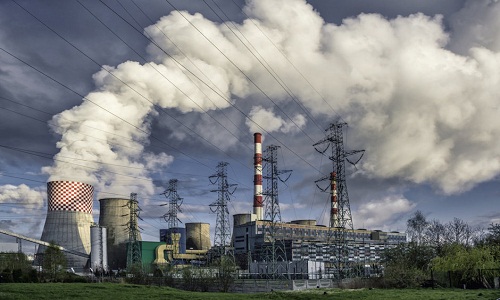"Shifts in how we make and consume clothing are stretching planetary resources to breaking point, feels Michael Stanley-Jones, Nairobi-based Programme Management Officer of UN Environment’s Poverty-Environment Initiative. As per a 2016 McKinsey report, clothing production has doubled, the average consumers’ apparel purchase has increased by 60 per cent, and the average usage duration of apparel has halved between 2000 and 2014. Another report by the Ellen MacArthur Foundation found the lost value of wasted apparel due to underuse and lack of recycling reached $500 billion annually."
 A recent McKinsey study shows the number of urban fashion consumers will double to two billion by 2025. Behind this rosy picture lies a startling reality of being the world’s second largest industrial polluter after oil and employs over 60 million workers throughout the global value chain. But growing awareness among consumers and the need to achieve anti-poverty Sustainable Development Goals (SDGs) by 2030 requires a dramatic transformation.
A recent McKinsey study shows the number of urban fashion consumers will double to two billion by 2025. Behind this rosy picture lies a startling reality of being the world’s second largest industrial polluter after oil and employs over 60 million workers throughout the global value chain. But growing awareness among consumers and the need to achieve anti-poverty Sustainable Development Goals (SDGs) by 2030 requires a dramatic transformation.
Shifts in how we make and consume clothing are stretching planetary resources to breaking point, feels Michael Stanley-Jones, Nairobi-based Programme Management Officer of UN Environment’s Poverty-Environment Initiative. As per a 2016 McKinsey report, clothing production has doubled, the average consumers’ apparel purchase has increased by 60 per cent, and the average usage duration of apparel has halved between 2000 and 2014. Another report by the Ellen MacArthur Foundation found the lost value of wasted apparel due to underuse and lack of recycling reached $500 billion annually.
Sustainable fashion solutions could include slower consumption, more environmentally responsible production, recycling of used fabrics, and promoting ‘durable, reusable, and eco-friendly’ fashion. Stanley intends to instill a stronger understanding of the underlying principles of ‘circular’ or no-waste economy as it applies to fashion, leading to action at each stage of the supply chain, beginning with the more sustainable sourcing of materials for textile and fabric design, and ending with exploration of possible alternative markets to source and distribute and recover clothing, during his participation at the upcoming Global Landscapes Forum digital summit – Fashion for the Sustainable Development Goals: Sustainable Supply Chains and Green Job Opportunities for Youth and Women.
‘durable, reusable, and eco-friendly’ fashion. Stanley intends to instill a stronger understanding of the underlying principles of ‘circular’ or no-waste economy as it applies to fashion, leading to action at each stage of the supply chain, beginning with the more sustainable sourcing of materials for textile and fabric design, and ending with exploration of possible alternative markets to source and distribute and recover clothing, during his participation at the upcoming Global Landscapes Forum digital summit – Fashion for the Sustainable Development Goals: Sustainable Supply Chains and Green Job Opportunities for Youth and Women.
UN Interventions
A High Level Political Forum on Sustainable Development is scheduled at the UN headquarters in New York this July, which will focus on UN plans to launch a Partnership for Sustainable Fashion. As Stanley says, agreeing on its scope and engaging with stakeholders are high on this agenda, naming the private sector, investors, researchers, farmers, activists, innovators, designers, educators, youth and the media among targeted stakeholders. This partnership will be part of UN Environment’s Poverty-Environment Action for Sustainable Development Goals 2018-2022 (PEA SDG), scheduled for launch in late 2018 as a programme for bringing pro-poor, environmentally sustainable management of natural resources into the heart of government decision-making.
The UN Framework Convention on Climate Change anticipates a 60 per cent increase in fashion industry’s greenhouse gas emissions and waste by 2030 if transformation towards a sustainable fashion industry fails to materialise soon. Pressing environmental issues in the fashion industry include controlling its water and energy footprint, facilitating closed loop recycling, promoting sustainable materials, halting overproduction and treating waste appropriately.
Freshwater resources are stressed by cotton production and consumption during processing. Producing and consuming countries’ water bodies both suffer from wastewater pollution. Energy consumption is heightened by the production of synthetic fibers, which are petroleum-based. Synthetic micro-fiber pollution is of increasing concern with micro-plastics being washed in water bodies and showing up in aquatic species at alarming rates, he added.
Driving change
With a view to drive change, incentives such as green finance will be required for stimulating the fashion industry’s transition towards sustainability, Stanley-Jones said. One promising area is soil carbon sequestration, techniques for increasing soil fertility and increasing carbon capture by farms and grazing lands. Reforms may be introduced through assessment of landscapes’ potential to serve as carbon sinks, and the awarding of credits to those field managers who implement them, he explained.
The UN Food and Agriculture Organization’s Ex-Ante Carbon-balance Tool (EX-ACT) is a cost-effective land-based accounting system, which estimates the impact of agriculture and forestry on a landscape’s carbon balance, comparing policy change and business-as-usual scenarios. It can be applied to evaluate the fashion industry’s value chain. Moreover, the Sustainable Apparel Coalition is best known for developing the Higg Index, which aims to holistically measure members’ sustainability in terms of product design, facility labour conditions, and brand environmental-social impacts, encouraging members to be transparent in sharing and comparing scores for public scrutiny. Currently, there is not yet a clear roadmap determining the fashion industry’s global sustainability standards, and the upcoming establishment of the UN Partnership for Sustainable Fashion will help pave the way.












